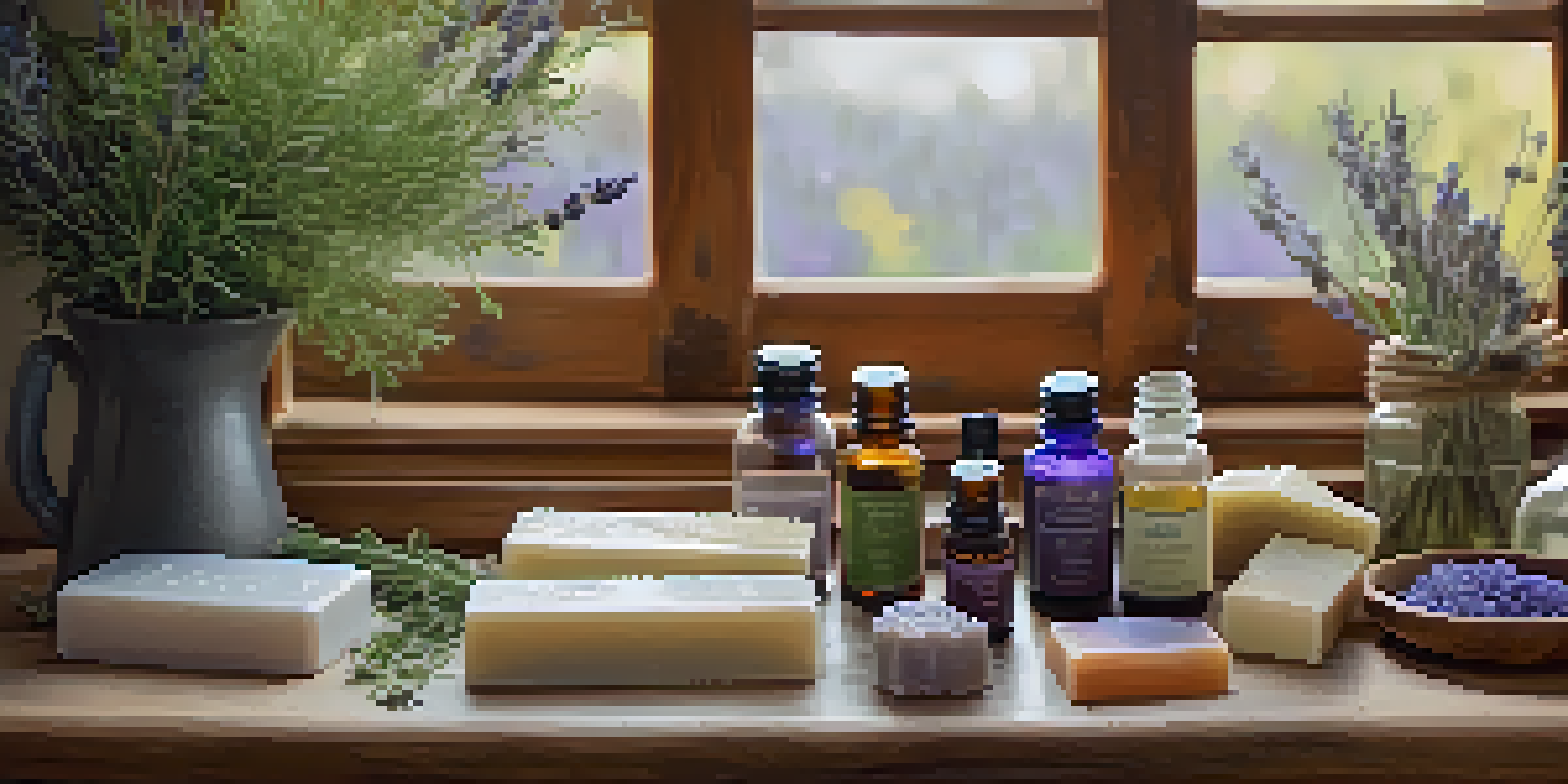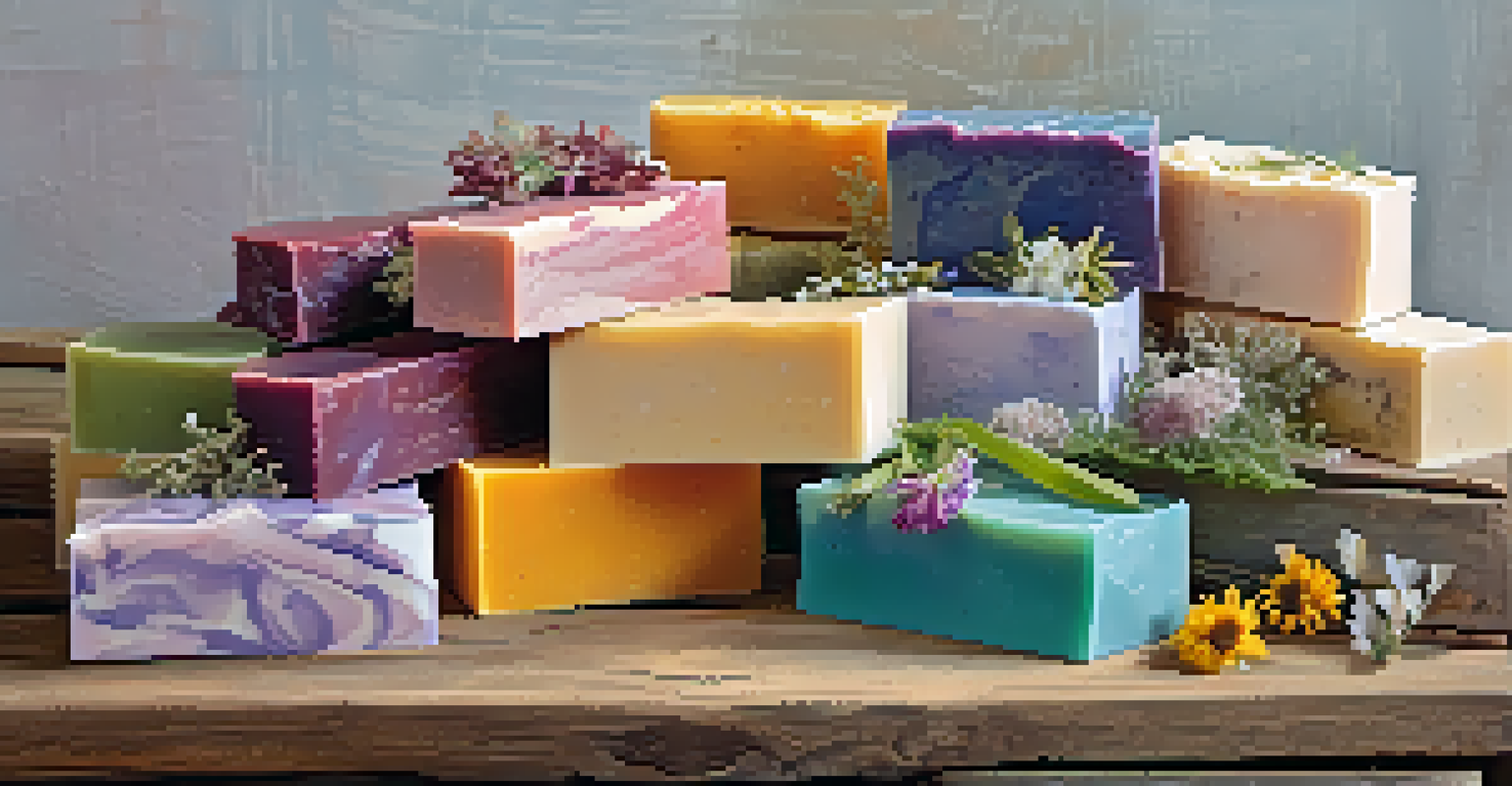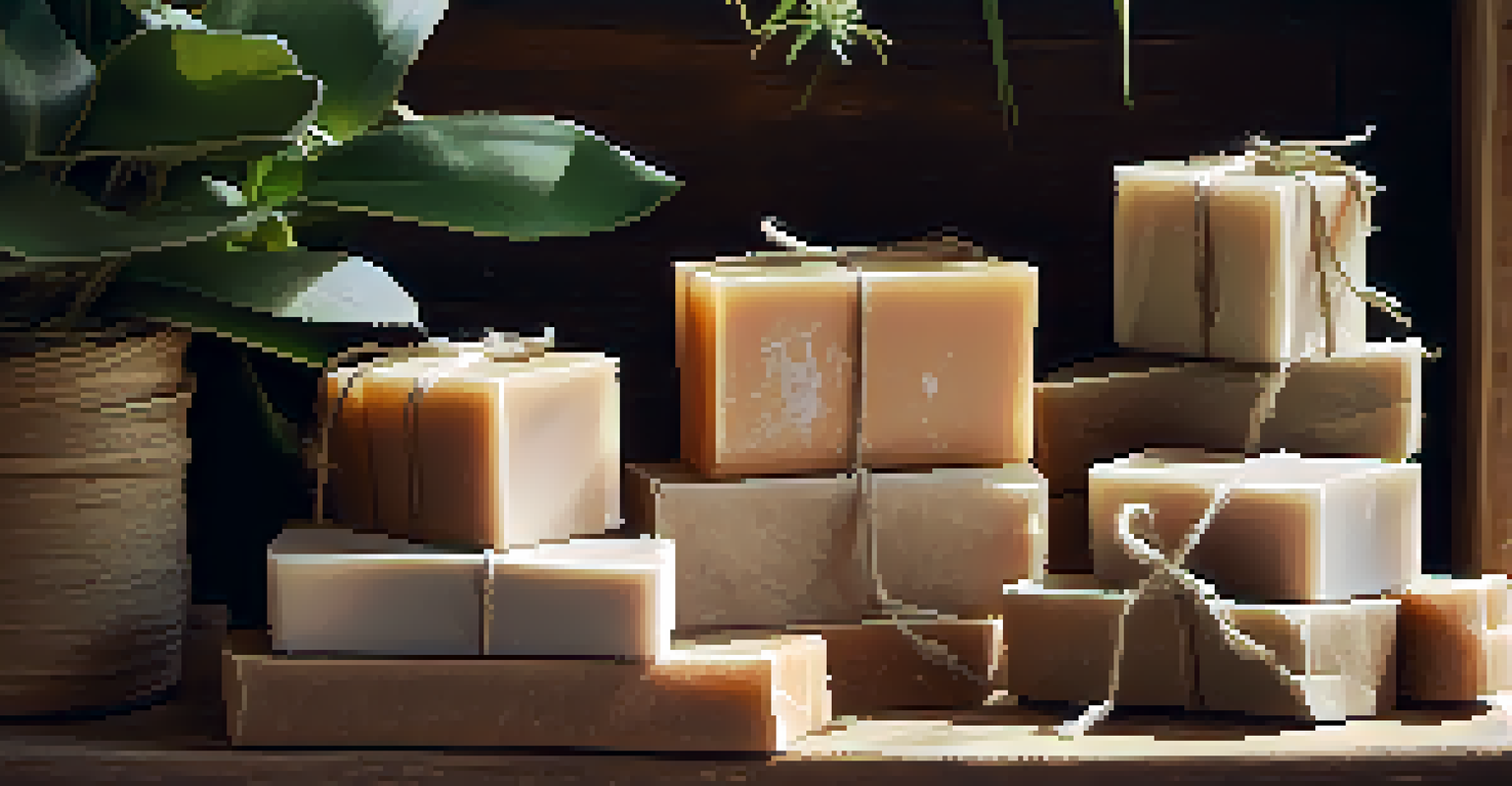Creating Unique Fragrances for Your Homemade Soap

Understanding the Basics of Soap Fragrance Creation
Creating unique fragrances for your homemade soap starts with understanding the basics of scent. Fragrance oils and essential oils are the two main types of scents used in soap making. While fragrance oils are synthetic and offer a wide range of scents, essential oils are natural and provide therapeutic benefits. Knowing the difference can help you decide which route to take for your soap.
Perfume is the most intense form of memory.
When selecting your scents, consider the overall experience you want to create. Do you envision a refreshing, invigorating soap or something calming and soothing? The scent can significantly influence the mood and perception of your soap, so take your time to explore various options.
Additionally, it’s essential to consider how different scents interact with each other. Just like a well-balanced dish, fragrances can complement or clash with one another. Experimenting with combinations can lead to delightful discoveries, making your soap truly unique.
Choosing the Right Ingredients for Your Fragrance
The next step in creating unique fragrances is selecting the right ingredients. Start with high-quality oils, as this will impact both the scent and the quality of your soap. Look for reputable suppliers that provide pure essential oils and fragrance oils that are specifically designed for soap making.

You might also want to consider natural additives like herbs, spices, or dried flowers to enhance your soap’s scent profile. For instance, adding dried lavender can not only impart a soothing aroma but also provide visual appeal. It's a great way to create a multi-sensory experience.
Choose Scents Wisely for Soap
Understanding the difference between fragrance oils and essential oils is essential for creating the desired mood and experience in your soap.
Remember to take note of the saponification process, which can alter the scent during soap making. Some fragrances may fade or change when mixed with lye, so it's wise to conduct small test batches to see how your chosen scents hold up.
Experimenting with Fragrance Blending Techniques
Once you have your ingredients, it’s time to experiment with fragrance blending techniques. Start by creating a scent profile that balances top, middle, and base notes. Top notes are the first scents you smell, while base notes linger longer. This layering can make your soap’s fragrance more complex and intriguing.
The greatest danger for most of us is not that our aim is too high and we miss it, but that it is too low and we reach it.
A simple way to mix fragrances is to use a dropper to add oils incrementally. Start with a few drops of your base note, then add middle and top notes gradually, smelling as you go. This method allows you to adjust the scent until it feels just right.
Don’t be afraid to keep a journal of your experiments. Documenting your blends and their results will help you replicate successful fragrances and avoid any unfortunate mixes in the future. It’s all about trial and error, so enjoy the process!
Calculating the Right Amount of Fragrance for Soap
Getting the fragrance strength right is crucial for your soap-making project. The general rule of thumb is to use about 1 ounce of fragrance oil per pound of base oils. However, this can vary depending on the specific fragrance and your personal preference.
If you're using essential oils, they are typically more potent, so you may want to start with less and adjust as needed. Remember, a little goes a long way, especially since scents can intensify during the curing process.
Experiment with Blending Techniques
Creating a balanced scent profile through experimentation can lead to unique and captivating fragrances for your soap.
Always conduct a small batch test to see how the fragrance performs in your soap. This will give you a clearer idea of how the scent translates from the mixing bowl to the final product, ensuring your homemade soap smells just as you envisioned.
Enhancing Soap Fragrance with Natural Additives
Natural additives can elevate your soap's fragrance and create a unique touch. Ingredients like dried herbs, spices, and even fruit peels can add subtle scents that complement your primary fragrance. For instance, adding rosemary can enhance a citrus soap, while vanilla beans can create a warm, inviting aroma.
When using natural additives, be mindful of their moisture content, as this can affect the soap’s consistency. Dried products are preferable, as they won't introduce unwanted moisture that could lead to spoilage.
Experiment with different combinations to see what works best for your desired scent. The beauty of homemade soap lies in customization, so let your creativity flourish!
Storing and Curing Your Soap for Best Results
After pouring your soap into molds, it’s crucial to store and cure it properly. Curing allows the soap to harden and the fragrance to mature, resulting in a well-rounded scent. Typically, soap should cure for 4 to 6 weeks, depending on the recipe and ingredients used.
During the curing process, keep your soap in a cool, dry place away from direct sunlight. This helps preserve the integrity of the fragrance and prevents any discoloration. Make sure to turn your soap bars occasionally to ensure even curing.
Proper Curing Enhances Fragrance
Allowing your soap to cure properly for 4 to 6 weeks helps develop and mature the fragrance, resulting in a more enjoyable final product.
Patience is key here. The longer your soap cures, the better the scent will develop. It’s like aging a fine wine; the wait is worth it when you finally get to enjoy your beautifully fragrant creation.
Packaging Your Soap to Preserve Its Unique Scent
Once your soap is fully cured, proper packaging is essential to preserve its unique scent. Exposure to air can cause fragrances to fade, so consider wrapping your soap in breathable materials like paper or cloth. This helps to maintain the scent while allowing the soap to continue to breathe.
Labeling your soap with the fragrance details not only adds a personal touch but also helps you remember your creations. Include the ingredients and any special notes about the scent profile or benefits, making it a lovely gift or product for sale.

Additionally, store your packaged soap in a cool, dry area away from direct sunlight. This care will help ensure that your unique fragrances remain vibrant and appealing until you’re ready to use them.